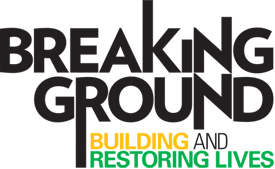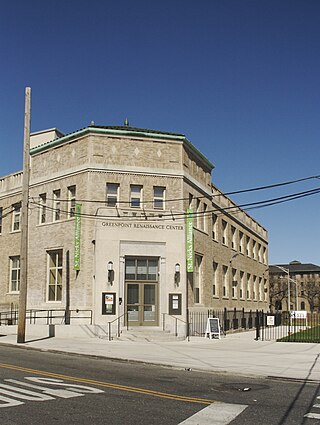
East New York is a residential neighborhood in the eastern section of the borough of Brooklyn in New York City, United States. Its boundaries, starting from the north and moving clockwise, are roughly the Cemetery Belt and the Queens borough line to the north; the Queens borough line to the east; Jamaica Bay to the south, and the Bay Ridge Branch railroad tracks and Van Sinderen Avenue to the west. Linden Boulevard, Pennsylvania Avenue, and Atlantic Avenue are the primary thoroughfares through East New York.

Patient dumping or homeless dumping is the practice of hospitals and emergency services inappropriately releasing homeless or indigent patients to public hospitals or on to the streets instead of transferring them to a homeless shelter or retaining them. These cases may usually require expensive medical care with minimal government reimbursement from Medicaid or Medicare. The term homeless dumping has been used since the late 19th century and resurfaced throughout the 20th century alongside legislation and policy changes aimed at addressing the issue. Studies of the issue have indicated mixed results from the United States' policy interventions and have proposed a variety of ideas to remedy the problem.

Saint Vincent's Catholic Medical Centers was a healthcare system in New York City, anchored by its flagship hospital, St. Vincent's Hospital Manhattan.

The Brooklyn Hospital Center is a 464-licensed-bed, full-service community teaching hospital located in Downtown Brooklyn, New York City. The hospital was founded in 1845. It is affiliated with the Mount Sinai Health System, and serves a diverse population from a wide range of ethnic backgrounds.

Breaking Ground, formerly Common Ground, is a nonprofit social services organization in New York City whose goal is to create high-quality permanent and transitional housing for the homeless. Its philosophy holds that supportive housing costs substantially less than homeless shelters — and many times less than jail cells or hospital rooms, and that people with psychiatric and other problems can better manage them once they are permanently housed and provided with services. Since its founding in 1990 by Rosanne Haggerty, the organization has created more than 5,000 units of housing for the homeless. "This is about creating a small town, rather than just a building," according to Haggerty. "It's about a real mixed society, working with many different people." Haggerty left the organization in 2011 to found Community Solutions, Inc. Brenda Rosen was promoted from Director, Housing Operations and Programs to Executive Director, and has led the organization since.

The Brookdale University Hospital and Medical Center is a nonprofit 501(c)(3) medical services provider in the borough of Brooklyn, New York City. Brookdale's primary and secondary service areas together comprise 1 million residents. It serves most of Eastern Brooklyn: Brownsville, East New York, Canarsie and East Flatbush.

All Angels' Church is located on 251 West 80th Street in the Upper West Side of Manhattan in New York City. It is a member of the Episcopal Church in the United States and the Anglican Communion worldwide.

NYU Langone Hospital – Brooklyn is a 450-bed academic teaching hospital in the Sunset Park neighborhood of Brooklyn, New York City. Formerly named NYU Lutheran Medical Center, it functions as the hub of Lutheran Healthcare, a part of NYU Langone Health.
Sydenham Hospital was a healthcare facility in Harlem, Manhattan, New York, which operated between 1892 and 1980. It was located at 124th Street and Manhattan Avenue.

The 23rd Regiment Armory, also known as the Bedford Atlantic Armory, is a historic National Guard armory building located at 1322 Bedford Avenue between Atlantic Avenue and Pacific Street in the Crown Heights neighborhood of Brooklyn, New York City, United States. The building is a brick and stone castle-like structure designed to be reminiscent of medieval military structures in Europe. It was built in 1891–95 and was designed in the Romanesque Revival style by Fowler & Hough, local Brooklyn architects, and Isaac Perry, the New York state government's architect.

The Greenpoint Renaissance Enterprise Corporation (GREC) is a consortium of neighborhood organizations in North Brooklyn that serves to facilitate and advocate the activities for city initiatives, as well as coordinate community involvement in the neighborhood of the former Greenpoint Hospital Complex.
The Hole is a small neighborhood in New York City on the border between Brooklyn and Queens. It is a low-lying area, with a ground level that is 30 feet (9.1 m) lower than the surrounding area. The area is run-down, and suffers from frequent flooding. It has been described as a "lost neighborhood", and as resembling a border town from the Wild West. It is generally bordered by Eldert Lane, 78th (Sapphire) Street, South Conduit Avenue, and Linden Boulevard. Nearby neighborhoods include East New York, Lindenwood, and Ozone Park.

The 13th Regiment Armory is a historic armory designed by architects Rudolph L. Daus and Fay Kellogg and built in 1892–1894. It is located at 357 Marcus Garvey Boulevard between Putnam and Jefferson Avenues in Bedford-Stuyvesant, Brooklyn, New York City. Daus had previously designed the Lincoln Club on Putnam Avenue in 1889.
Little Neck Hospital, also known as Little Neck Community Hospital, Deepdale Hospital, and Deepdale General Hospital all referred to a 185-bed facility at the same address on Little Neck Parkway in Little Neck, Queens, New York City. It opened in 1959 as Deepdale, was renamed in 1991, and closed in 1996. By the time it closed, this hospital was operating as a division of Flushing Hospital Medical Center; the latter was acquired by New York Hospital in April 1996.
Madison Avenue Hospital was a 121-bed Manhattan hospital that opened in 1950 and closed in 1976. In 1971, it was described as "a profit-making institution where abortions are performed on a large scale."

Greenpoint Hospital was a hospital located in Greenpoint, Brooklyn. It opened in 1914 and closed in 1982. As of 2016 final disposition of the hospital site's ten buildings were still pending.
Lefferts General Hospital was "a 160-bed private hospital" at 460 Lefferts Avenue opened in 1958 in the former Crown Heights Hospital, built in 1928.













